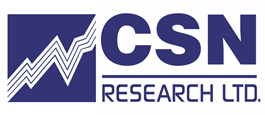Price & Trade Off Research
Price & Trade Off Research

Price and trade-off research is a method used by marketers and businesses to understand how customers perceive the value of products or services in relation to their prices and to identify the trade-offs customers are willing to make when making purchasing decisions. This research helps businesses optimize pricing strategies, product offerings, and marketing messages to maximize profitability and customer satisfaction. Here's an overview of price and trade-off research:
Price Sensitivity Analysis: Price sensitivity analysis aims to understand how changes in price impact customer demand and purchasing behavior. This involves conducting experiments or surveys to measure customers' willingness to pay at different price points and identifying price thresholds or price elasticity of demand. Price sensitivity analysis helps businesses determine optimal pricing strategies, such as premium pricing, value-based pricing, or penetration pricing, to maximize revenue and profitability.
Conjoint Analysis: Conjoint analysis is a powerful technique used to understand how customers evaluate and make trade-offs between different product attributes and price. In conjoint analysis, respondents are presented with a series of hypothetical product profiles that vary in attributes such as brand, features, quality, and price, and are asked to choose their preferred option. By analyzing respondents' choices, businesses can determine the relative importance of different product attributes and estimate customers' willingness to pay for each attribute level. Conjoint analysis helps businesses optimize product design, pricing, and marketing strategies to meet customer preferences and maximize value.
Van Westendorp Price Sensitivity Meter: The Van Westendorp Price Sensitivity Meter is a survey-based technique used to determine the optimal price range for a product or service. In this approach, respondents are asked a series of questions about their willingness to buy the product at different price levels, including questions about the price being too low, a bargain, too expensive, or too expensive to consider. By analyzing respondents' responses, businesses can identify the price range that maximizes demand and revenue while minimizing customer resistance.
Brand Price Trade-Off Analysis: Brand price trade-off analysis examines how customers perceive the relationship between a brand's image or reputation and its price. This involves measuring customers' perceptions of a brand's quality, value, and prestige relative to its price, as well as their willingness to pay a premium for the brand compared to competitors. Brand price trade-off analysis helps businesses understand the factors that influence customers' price perceptions and develop pricing strategies that align with their brand positioning and target market.
Choice Modeling: Choice modeling is a statistical technique used to model and predict customer choices based on different product attributes, including price. In choice modeling studies, respondents are presented with a set of product profiles that vary in attributes and are asked to choose their preferred option. By analyzing respondents' choices using advanced statistical models, businesses can estimate the impact of price changes on product demand and simulate the effects of different pricing strategies on sales and revenue.
By conducting price and trade-off research, businesses can gain valuable insights into customer preferences, perceptions, and purchasing behavior, which can inform pricing strategies, product development decisions, and marketing tactics. Effective use of price and trade-off research can help businesses optimize their offerings to meet customer needs, maximize value, and achieve competitive advantage in the marketplace.
03 April 2024
Viewed 177 time

 EN
EN 

